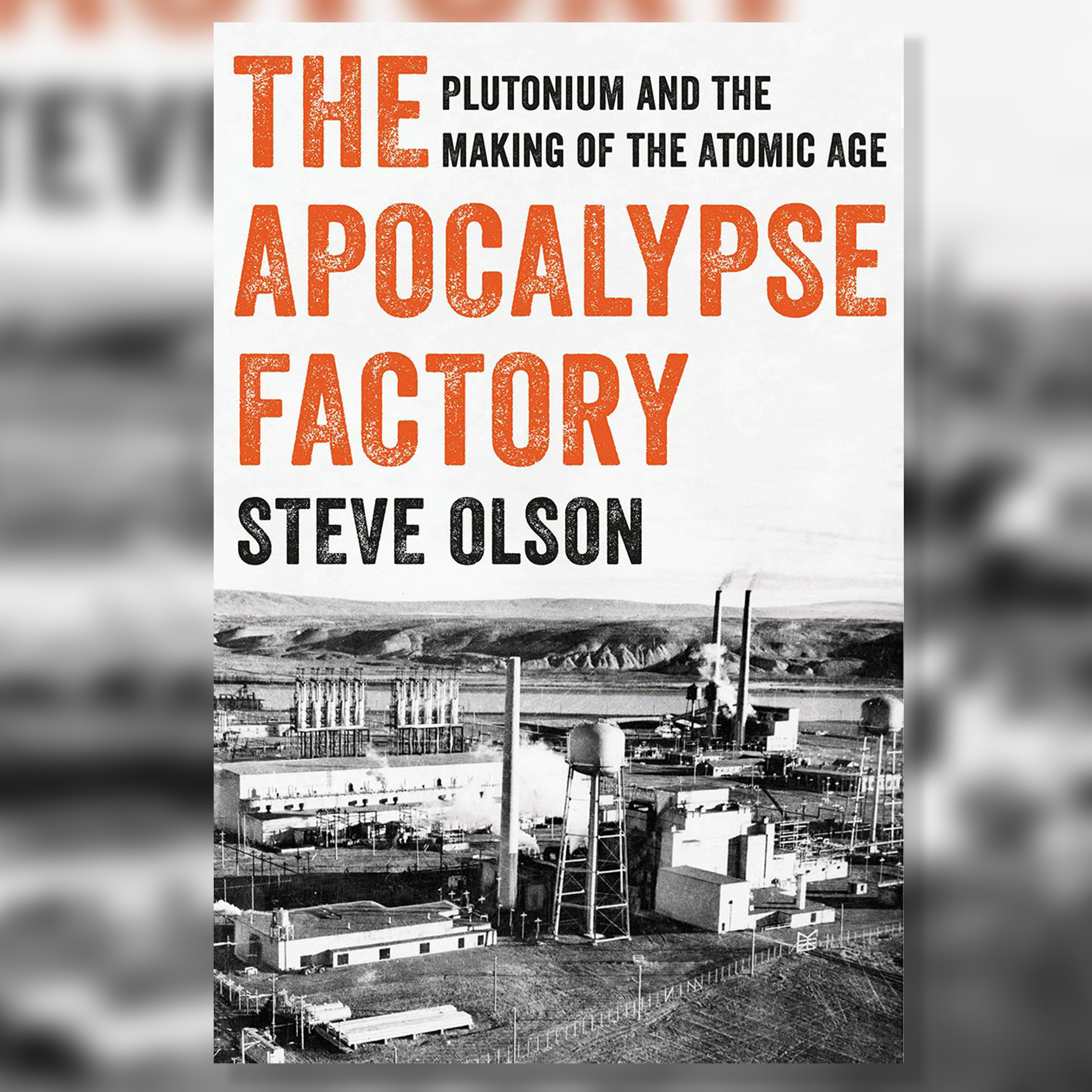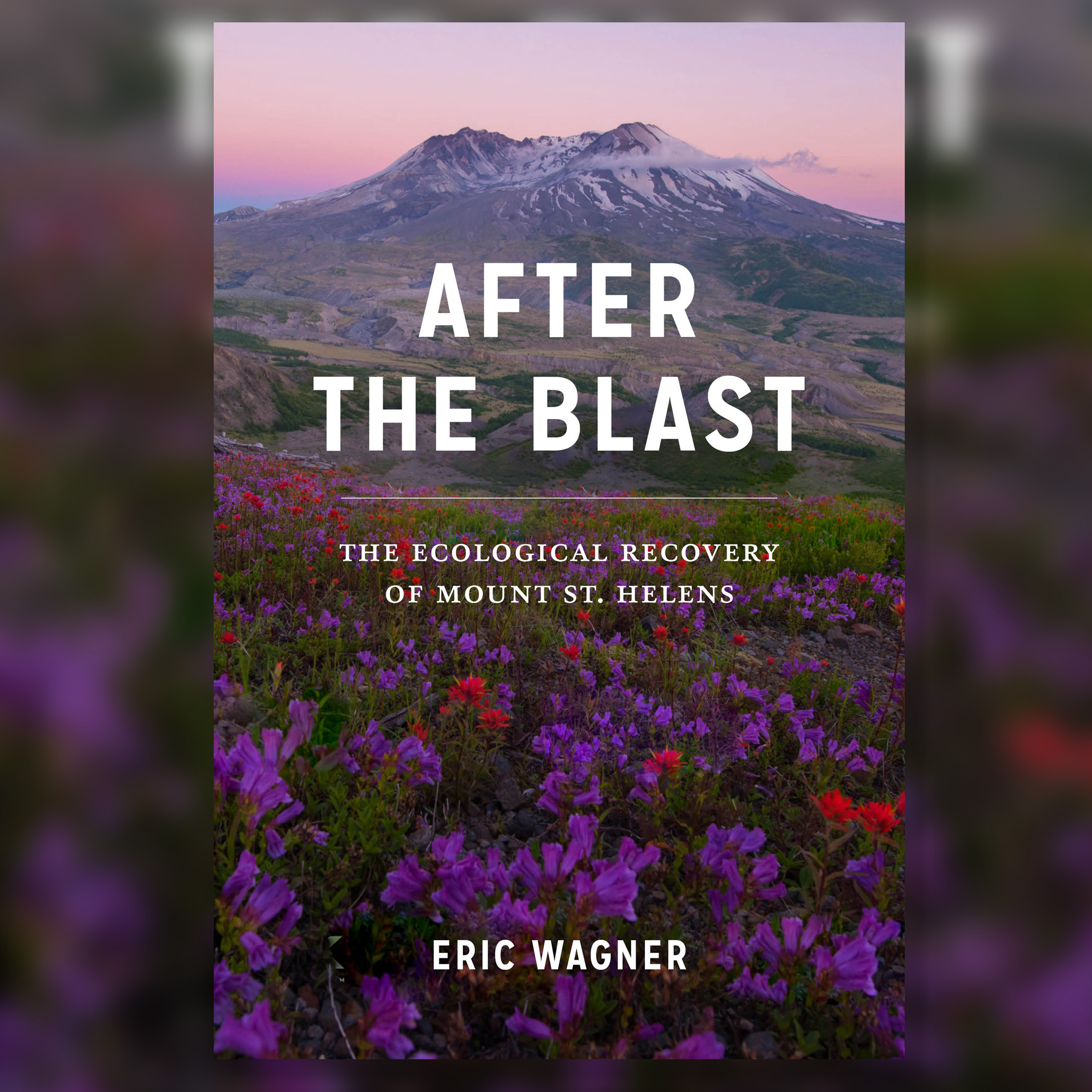The Apocalypse Factory: Plutonium and the Making of the Atomic Age by Seattle science writer Steve Olson, coming out in July from Norton, tells the story of Hanford and the creation of the atomic bomb. It’s an incredibly compelling tale of human ingenuity and the U.S. government’s commitment to solve a problem: how to take a scientific concept from the laboratory to mass-scale production to win a war. Olson turns the process of scientific discovery, building the bomb and the quandaries that follow into a compelling page turner.
Fear is the great motivator, and in the late 1930s to mid-’40s a small group of scientists was obsessed with the new theoretical concept of atomic power and the potential of that power for war and industry. The inventors were driven by the terror that German chemists and physicists were ahead of them and might be able to build an atom bomb first. That would have been catastrophic, giving the Nazis the key to global dominance. The American scientists knew whoever got the bomb first — if one could indeed be manufactured — would win the war and control the course of the world thereafter.
Olson tells the story of the discovery of plutonium, why it became the key factor in solving the problem at hand and how its production created problems we are living with to this day. “Hanford,” he writes, “represents one of humanity’s greatest intellectual achievements; it also embodies a moral blindness that could destroy us all.”

The good news is the U.S. government bet on science and brilliant minds to envision a truly world-changing idea: nuclear power. President Franklin D. Roosevelt read a proposal and quickly — in minutes, not days — decided to OK putting money and muscle into developing a high-risk project that might win a war we weren’t even in yet. Combining university research with science, industrial know how and the U.S. military’s capacity for large-scale organization, the country identified and solved monumental production problems.
A man-made element, plutonium, was taken from an invisible lab sample to industrial scale manufacture at a massive, secret reservation half the size of Rhode Island in the steppe desert of Eastern Washington, powered by the new Grand Coulee Dam and the abundant cooling waters of the Columbia River. Scientists, engineers and others invented and erected enormous nuclear reactors, and built a modern city, Richland, with vast work camps. At its peak, Hanford, the production facility for what was known as the Manhattan Project, employed over 50,000 workers. The original reactor, B, survives and is designated a National Historic Landmark.
Hanford’s one task, with the help of B and subsequent reactors, was to produce large amounts of plutonium — transformed from a rare type of uranium — to make atom bombs. Olson writes that when the first plutonium was to be delivered to the project’s research facility in Los Alamos, New Mexico, where a bomb would be made, it was carried in a box by a man on a civilian passenger train. When he transferred the box to a colleague in Los Angeles, he advised that colleague to get a locked compartment for the trip: “I mean that it cost $350 million” to make what was in the box. “If you don’t get it to Los Alamos intact, you’re going to be in a hell of a lot of trouble.”
The colleague made it. Plutonium was used in the first atomic explosion ever — the Trinity test in the Jornada del Muerto Desert in New Mexico — and in the second (and so far last) atomic bomb dropped on human beings, in Nagasaki in 1945 — 75 years ago this August and only days after the Hiroshima bomb (made with enriched uranium, not plutonium). The surrender of Japan shortly followed, and World War II ended.
The profound moral dilemmas, not unforeseen by the bomb makers, blossomed with the mushroom clouds of Hiroshima and Nagasaki. This is the dark side of the equation. Was dropping the second bomb on Nagasaki necessary? Might not a demonstration bomb as a warning have convinced the Japanese to surrender? Did civilians need to be targeted? Many of the Manhattan Project’s scientists believed so to get at enemy manufacturing facilities. As to the future, they wondered how many bombs were needed in peacetime. And who would or should control nuclear power in the future, the military or civilians?
Watch: A Nagasaki survivor visits Hanford
The shift from World War to Cold War turned Hanford into the bomb — or apocalypse — factory of Olson’s title. What Hanford made possible changed the world, and it resulted in the proliferation of atomic weapons worldwide. The U.S. could not maintain the secret formula for their manufacture (Soviet spies had already obtained it) nor entirely stop that knowledge from spreading to other countries. In addition, industry saw that nuclear power could provide massive amounts of peacetime energy in the war’s aftermath. But it all came with a price.
By the 1980s, many Americans agreed that the bomb factory could be phased out. But they also understood that the atomic bomb left behind a disturbing moral legacy, and not only because it resulted in the massacre of tens of thousands of Japanese civilians at Nagasaki. It also left America — and the Pacific Northwest in particular — with the most contaminated radioactive site in the Western Hemisphere. “Hanford and its successor facilities have given us, for the first time in our history, the ability to destroy ourselves and everything we have created,” Olson writes.
Still, the story of the marvel of science and engineering is not lost in Olson’s story. We seem to do better with a gun to our heads, rather than the slow, slogging job of correcting mistakes, cleaning up messes or dealing with disasters that slowly unfold, like nuclear waste contamination or the effects of climate change. The enviable outcome of expertise and achievement, even with its horrific consequences, reminds us that brilliant science and committed government can achieve great things. Unfortunately, it is our moral compasses and attention spans that are too often unreliable.
Partly, that’s a condition of our species, which is dwarfed by geological time and scale. The second Washington blast to get attention in a book this spring is on the 40th anniversary of the eruption of Mount St. Helens. Seattle science writer Eric Wagner has written After the Blast: The Ecological Recovery of Mount St. Helens, published last month by the University of Washington Press. It is far from the disaster-movie account that you can read elsewhere, but instead focuses on what happened after 8:32 a.m. Sunday, May 18, 1980, when one of the most picturesque of Cascades peaks blew its top off with an explosive lateral eruption that sent debris circling the globe.
It was dramatic, and much bigger than the bomb Hanford made possible in Japan. The Nagasaki bomb was about 20 kilotons, whereas Mount St. Helens’ initial blast was 7 megatons and eventually released 24 megatons of thermal energy, says Olson (he previously wrote a book on St. Helens called Eruption). Occurring in sparsely populated wilderness, the eruption killed only 57 people, as opposed to the approximately 50,000 dead from the Nagasaki bomb. Even though the scale of the explosion was massive, if you lived in an area that was spared ash fallout and where the sound of the explosion ricocheted off the atmosphere, making it impossible to hear the distant “crack,” you might never have known St. Helens had erupted. It was chilling to think that such a monumental disaster could have been missed by people who didn’t read the newspaper or watch TV, or decided instead to sleep in that Sunday morning.

Wagner’s book begins in the seconds following the eruption, when much of the damaged occurred: a mountaintop was vaporized and massive landslides permanently altered the landscape; lahars and mudflows devastated hundreds of square miles; and choking ash, carried over the mountains to Hanford and beyond, buried parts of Eastern Washington.
After the Blast explores what has happened at Mount St. Helens since. There has been a huge investment of time and resources to study the landscape since the disaster, and it is rewriting our understanding of how places recover when the slate has been wiped clean. Scientists have literally devoted the lion’s share of the past 40 years to studying the return of plants, trees, bugs and critters to the wasteland St. Helens’ eruption left behind. If May 18 offered a vision of paradise lost, the decades since have allowed researchers to get a handle on how paradise returns.
Wagner points out that the term “recovery,” even though it is in the book’s subtitle, is not entirely accurate. What comes after the eruption is not an eventual repeat of what existed before. The new conditions create playing fields for nature that can lead to different outcomes: rivers move, lakes expand or contract, some areas are covered by a massive layer of what amounts to 100-foot-thick concrete. The succession of new species is not as predictable as more routine cleansings, like wildfires.
Wagner says one of the lessons learned is that chance, luck and quirks in the landscape can have large impacts. The book tells the story of U.S. Forest Service ecologist Jerry Franklin, later of the UW, stepping out of a helicopter a few weeks after the eruption, expecting a completely desolate landscape, only to find a sprig of fireweed pushing through the ash. That formed a kind of puzzle: where there was obliteration, there was still life. Another researcher discovered that in some areas pocket gophers survived the blast in their underground tunnels. They eventually dug out through the ash, and their little dirt mounds helped other plants get established. Humans intervened as well, harvesting massive forests of blown-down timber and planting millions of fir trees. Wagner writes about the men and women who have been on their knees studying the minute evolution of the complex disaster landscape. Hanford’s nuclear engineers worked in man-made labs to create an atomic blast, whereas the St. Helens crews work in an outdoor laboratory shaped by nature’s explosive power.
If human science can create explosive disasters, Wagner shows that we can also learn from natural ones to enhance our understanding of how plant and animal species come and go, and whether some kind of long-term stability will be reached and what that might look like. It is hard work for humans who cannot easily conduct experiments that should last centuries, even millennia. But it is the kind of detailed, patient work that builds legacies of understanding. The St. Helens laboratory is protected by having been made into the Mount St. Helens National Volcanic Monument, so some of the plots of terrain marked off for research will, hopefully, not be disrupted.
There is value in watching grass grow, wildflowers bloom and trees reach toward the sky as they work their way back up St. Helens’ slopes. I remember taking a couple of helicopter rides over the area back in the ’90s and being awed both by the scale of the devastation and the herds of elk that were roaming again. The monument is an example of dynamic resilience — the strength of nature and the ability of life to endure.
That’s a message that resonates in this nuclear age, and in the time of our coronavirus quarantines. Science helps us understand. Government funds help us keep focus and energy to solve problems. We must have moral courage and the patience to witness recovery or remaking. It will happen, but things won’t be the same.
Editor's note: A free “After the Blast” book launch event will be held on May 18, 2020, via the University Bookstore. And on July 28, Steve Olson is scheduled to talk about his new book, The Apocalypse Factory, at Town Hall, either in person or online, depending on pandemic rules.


